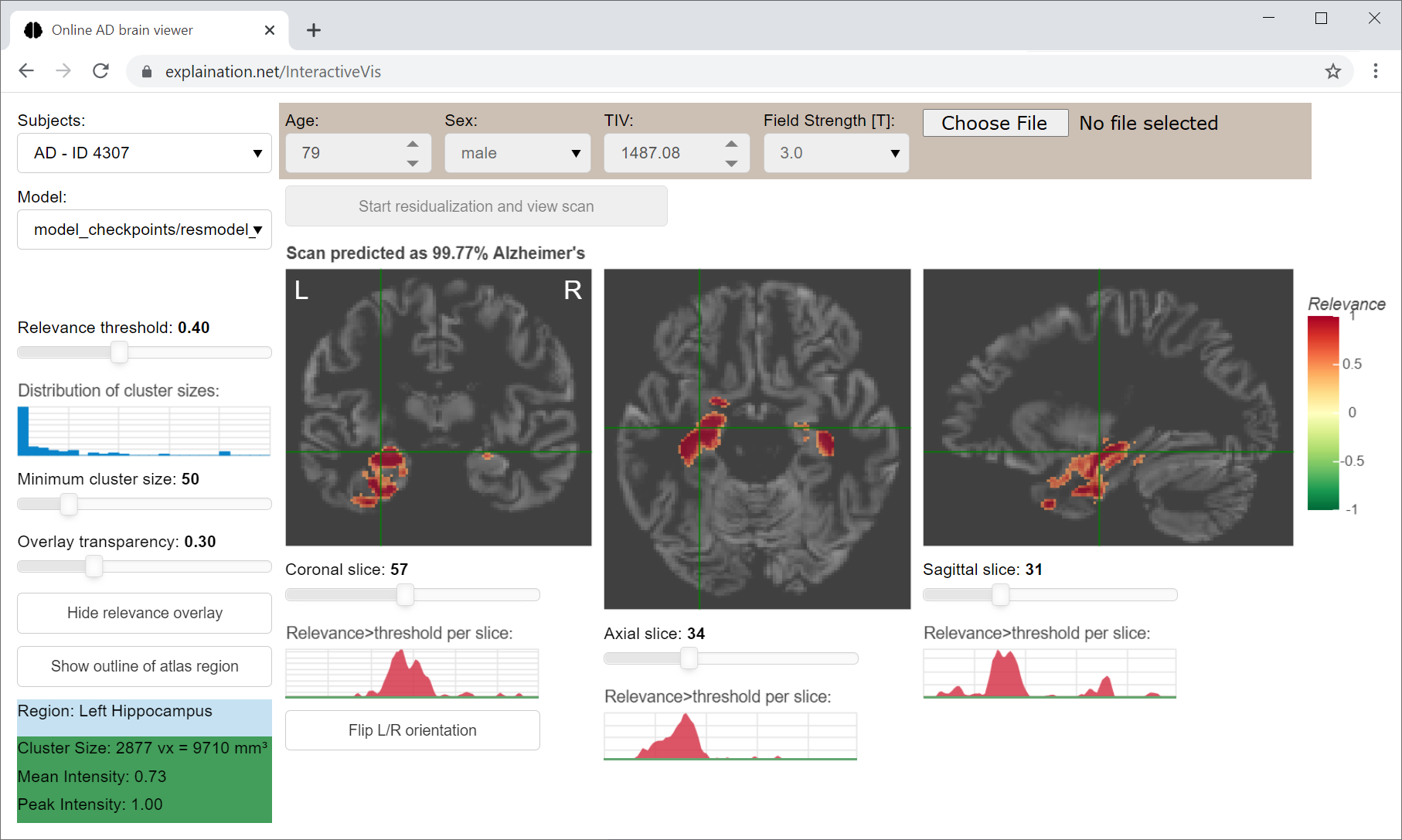InteractiveVis
The InteractiveVis software framework provides a blueprint for evaluating 3D datasets with convolutional neural networks (CNNs), and for deriving and visualizing CNN relevance maps. This tool was developed and tested for disease detection in MRI scans. We plan to extend it to other domains.
Description
Deep Learning Interactive Visualization
This project provides a software framework and all source code to learn a 3D convolutional neural network model for disease detection (e.g. Alzheimer's disease) and for visualization of contributing image regions with high relevance.
Further details on the procedures including samples, image processing, neural network modeling, evaluation, and validation were published in:
Dyrba et al. (2021) Improving 3D convolutional neural network comprehensibility via interactive visualization of relevance maps: evaluation in Alzheimer’s disease. Alzheimer's research & therapy 13. DOI: 10.1186/s13195-021-00924-2.
 Screenshot of the InteractiveVis app
Screenshot of the InteractiveVis app
Running the interactive visualization
The interactive Bokeh web application InteractiveVis can be used for deriving and inspecting the relevance maps overlaid on the original input images.
To run it, there are three options.
-
We set up a public web service to quickly try it out: https://explaination.net/demo
-
Alternatively, download the docker container from DockerHub:
sudo docker pull martindyrba/interactivevis
Then use theprovided scriptssudo ./run_docker_intvis.shandsudo ./stop_docker_intvis.shto run or stop the Bokeh app. (You find both files above in this repository.)
After starting the docker container, the app will be available from your web browser: http://localhost:5006/InteractiveVis -
Download the Git repository. Install the required Python modules (see below). Then point the Anaconda prompt or terminal console to the DeepLearningInteractiveVis main directory and run the Bokeh app using:
bokeh serve InteractiveVis --show
Requirements and installation:
To be able to run the interactive visualization from the Git sources, you will need Python 2 or 3 (specifically Python <3.8, in order to install tensorflow==1.15).
Note: We recommend to use Anaconda https://www.anaconda.com/ as development environment as it is capable of dynamically switching between virtual environments with different Python versions and packages.
Also, it is recommended to first create a new Python environment (using conda or virtualenv/venv) to avoid messing up your local Python modules/versions when you have other coding projects.
conda create -n InteractiveVis python=3.7
conda activate InteractiveVis
Run pip to install the dependencies:
pip install -r requirements.txt
Then you can start the Bokeh application:
bokeh serve InteractiveVis --show

- MIT